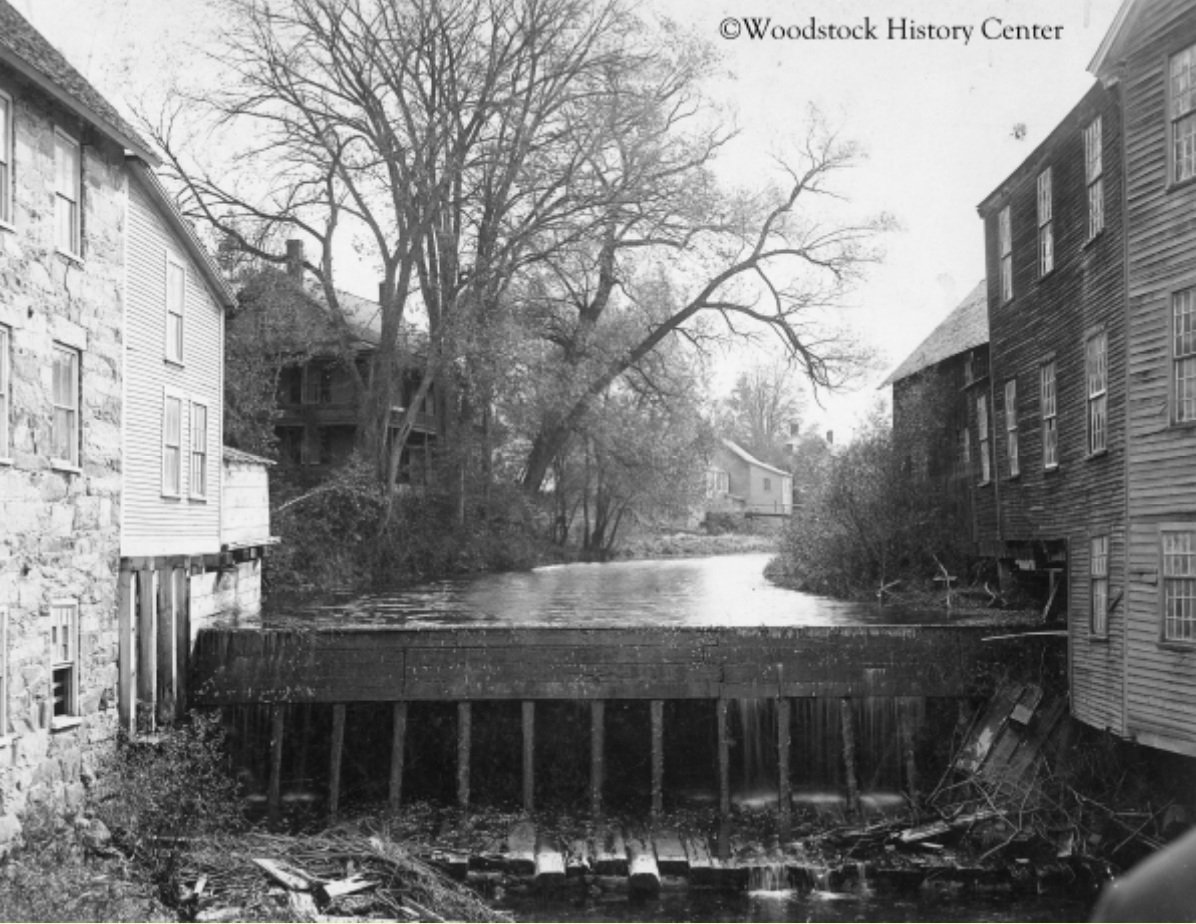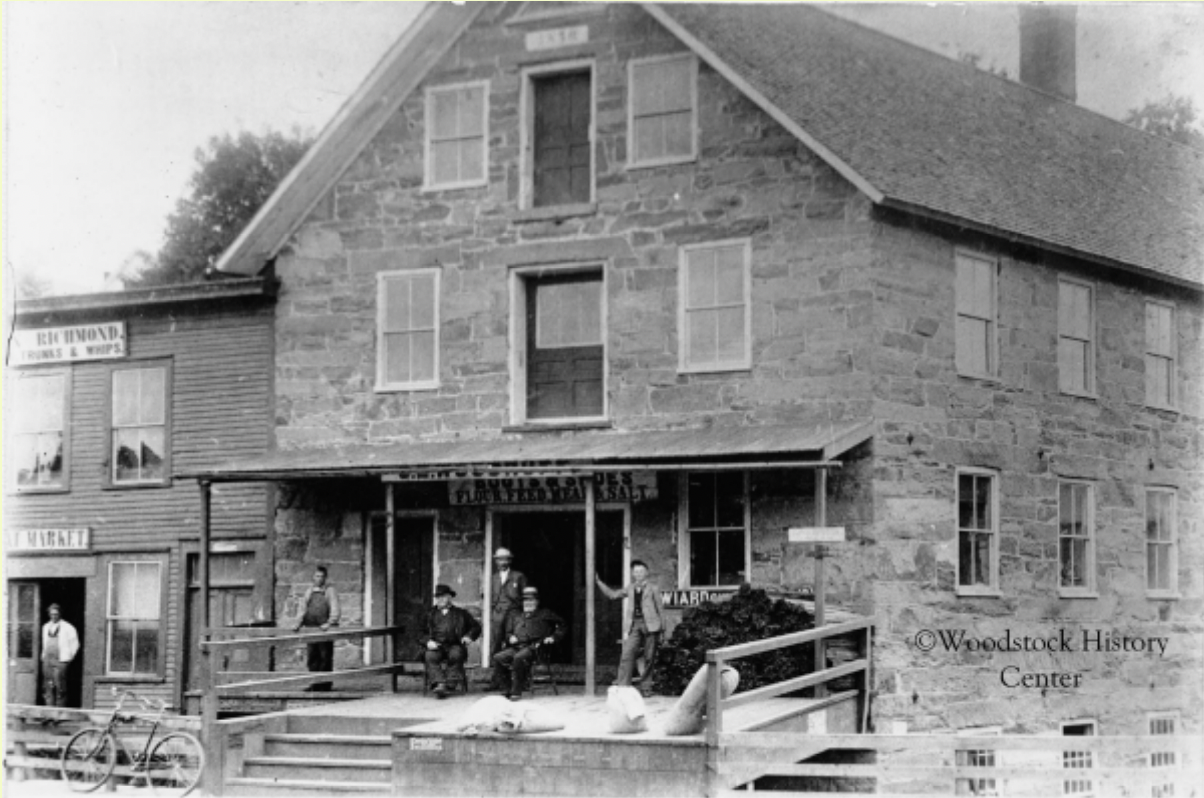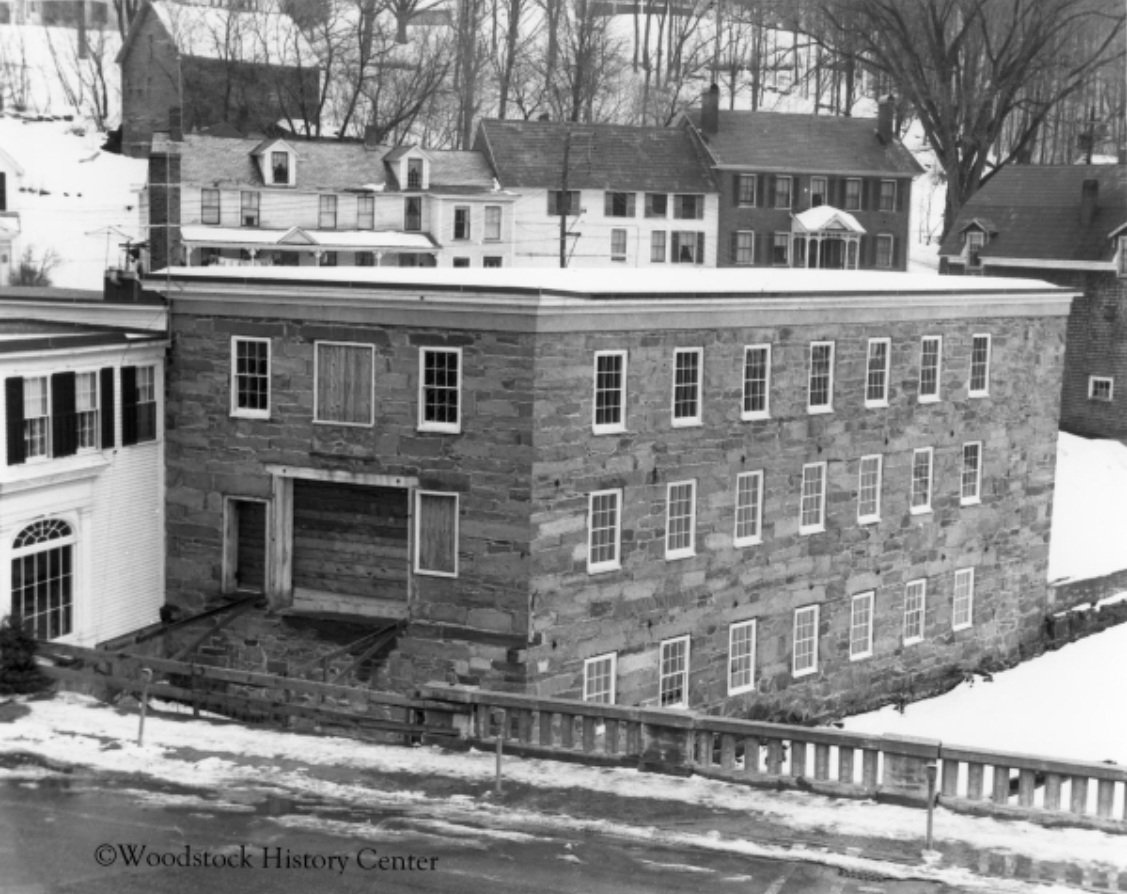The Story of Our Historical Building
Written by Member Andrea Trzaskos | Frog Song Designs
Adapted for the web by Rebecca Haas | Rebecca Haas Jewelry
Over the course of this past year while I've been minding the gallery, the question I've heard most often from visitors to our historic brook-side stone structure is 'what did this building used to be?', followed by various suggestions. Mill? Factory? Jail?
Well - not a jail. But after months of shrugging and guessing, I've finally turned to the Woodstock History Center for a bit of help and can now say, with authority: mill. Specifically, a linseed oil mill. As a contributing structure in the Woodstock Village Historic District, the c. 1827 stone building is even listed on the National Register (who knew?). There was also a jail, by the way - but that was across the street.
It turns out that the land we now sit on was purchased in 1792 by one Jacob Wilder, who built a dam on Kedron Brook and had his water-powered oil mill operating by 1794. The mill changed hands a number of times, with the original building being replaced by the existing stone structure in, apparently, 1827 (there seems to be room for a bit of historical sleuthing here, but I'm going with the History Center opinion). Fun fact about the basement:
"An associated dam created a mill pond that allowed a penstock to direct water from the pond into a power canal that ran through the basement level of the building. The power canal apparently discharged from the front of the exposed basement level and flowed back into the main brook channel just upstream of the bridge on Central Street." [1]
Huh. No water runs through the basement now unless there's some sort of problem. Like a flood - but that's another story.
The wooden dam on Kedron Brook (photo undated). The dam, no longer present, was located at the back corner of 'our building', with a penstock that directed water through the basement. Photo courtesy of the Woodstock History Center.
In any case, the mill seems to have been in operation until 1829, when R.D. Granger converted it into a furnace. Over the years the furnace was followed by a variety of businesses including a blacksmith shop, grocer, feed mill, carpentry shop, garage, collective art gallery.... The front of the building featured an access ramp, a central entryway and rather a nice porch for many years, as well as a gable-shaped roof (cue the fire of 1938!).
A c. 1895 view of the building's front, featuring an entry ramp, porch, and gable roof. Photo courtesy of the Woodstock History Center.
The fire of 1938 (and the demise of our gable roof). Photo courtesy of the Woodstock History Center.
In the aftermath of the 1938 fire, the building acquired a flat roof and its front was reconfigured into its present shape. The access ramp was removed (we have a quite sweet little garden there now) and the wide central opening was replaced by a multi-pane window that shines light beautifully into our gallery today.
A view of the building's revised profile following the fire of 1938. Photo courtesy of the Woodstock History Center.
Interestingly, should you happen to be a bridge enthusiast, the access ramp that was for so long a part of our building has influenced the shape of the bridge at our front door. The historic bridge, I should say:
"Bridge 51 has been determined to be eligible for listing on the National Register because it is a good, nearly intact example of a standardized concrete T-beam bridge. Its ornamental reinforced concrete balustrade railing is also a standard of the period. The bridge is also historically significant because it was designed to facilitate the construction of an access ramp from its deck to the main level of the former oil mill southeast of the bridge [that's us!]. Bridge 51 is at least the third bridge at the site to include platform or ramp access across the outflow of the penstock that historically provided water-power to the mill. Recent site reconfigurations have eliminated the need for the ramp but its addition to the standardized plans for Bridge 51, as well as its inclusion on previous bridges, is certainly unusual and perhaps unique." [2]
So there you are. Unusual and unique. Just like us. Thanks to the generosity of the Woodstock History Center, a full report about the bridge and our abutting building is available for perusal at the gallery.
A contemporary view of our front door.
Side note: A penstock is a sluice, gate or intake structure for controlling water flow (yeah...I had to look it up).
Endnotes: [1] Mary Jo Llewellyn, Historic Resource Documentation Package of Woodstock Village Bridge 51 (McFarland Johnson, New Hampshire, Prepared for Vermont Agency of Transportation, January 2019), p. 9. [2] Ibid., pp. 24-25.
Bibliography: Llewellyn, Mary Jo. Historic Resource Documentation Package of Woodstock Village Bridge 51. McFarland Johnson, Concord NH, Prepared for Vermont Agency of Transportation, January 2019.






